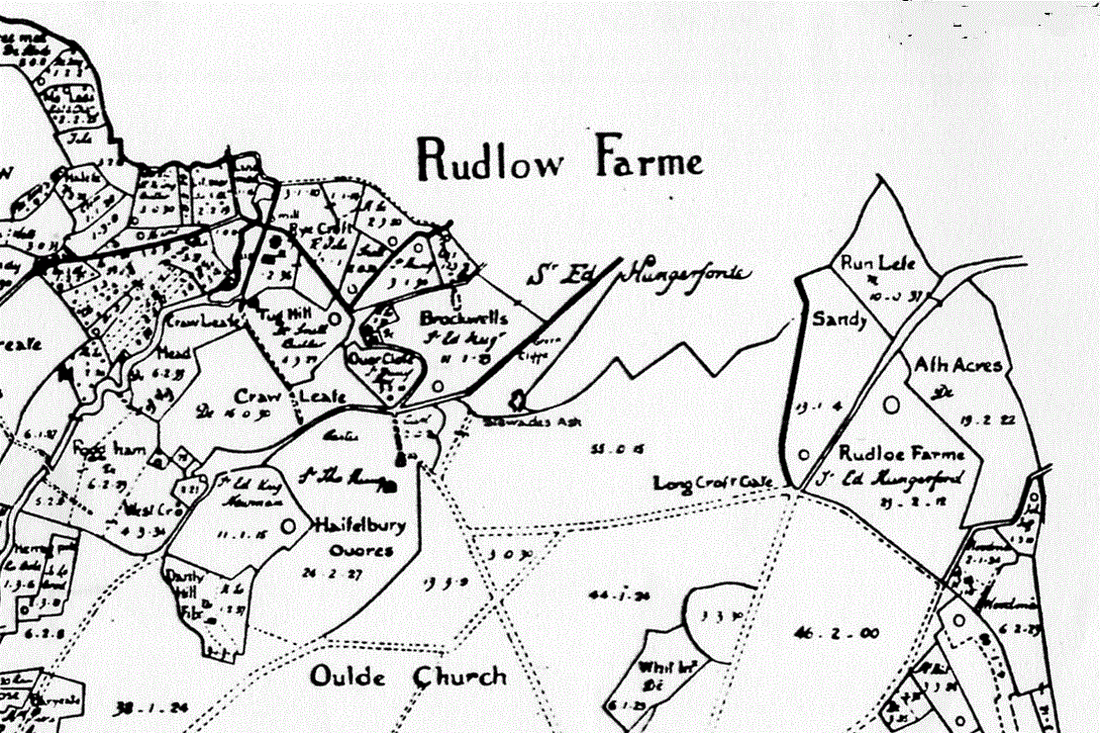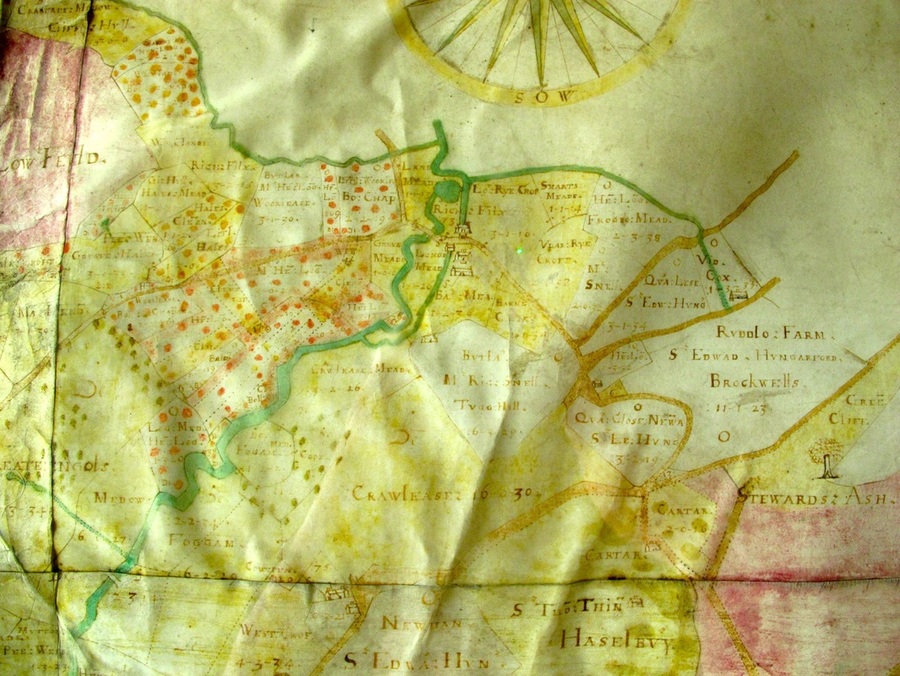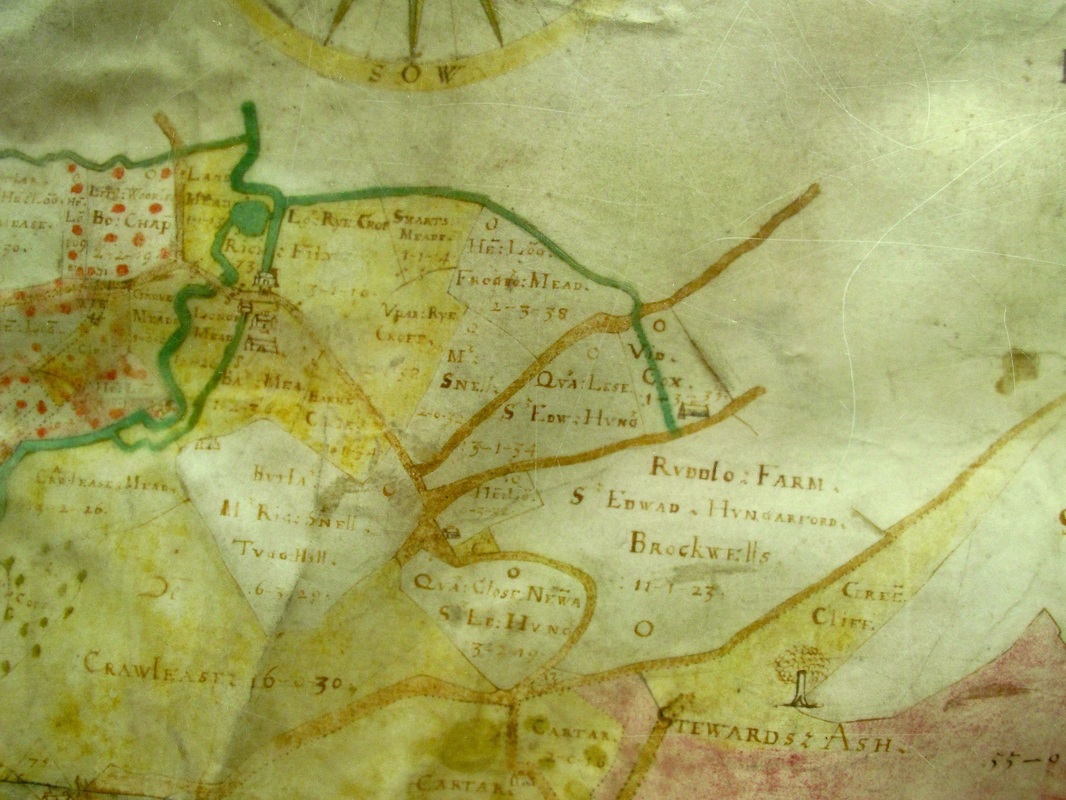Tudor & Stuart Rudloe Alan Payne March 2016
Hugh Speke did not own the manor of Rudloe and it is largely ignored in Allen's 1626 map. Instead the area was held by
Sir Edward Hungerford of Corsham, as marked on the map.
In 1589 Rudloe Manor was owned by Sir Walter Hungerford and after by Sir Edward Hungerford who later became a Commander of the Wiltshire Commonwealth troop in the Civil War.[1]
Sir Edward Hungerford of Corsham, as marked on the map.
In 1589 Rudloe Manor was owned by Sir Walter Hungerford and after by Sir Edward Hungerford who later became a Commander of the Wiltshire Commonwealth troop in the Civil War.[1]
We can see that the Hungerfords were absentee lords and the area marked Steward's Ash probably refers to their bailiff who ran the estate in their absence. His power in the area is reflected by a large tree shown on the bottom right of the map.
The properties at the top of the map towards the mill pond are significant (although small) and they appear to be Drewetts Mill straddling a bridge across the By Brook and Millsplatt Farm to the south. The confluence at this location of the Rivers Lid and By Brook still exists today.
There is no indication of the present track of the A4 up Box Hill and that appears to have been a completely new route built in 1761.
The properties at the top of the map towards the mill pond are significant (although small) and they appear to be Drewetts Mill straddling a bridge across the By Brook and Millsplatt Farm to the south. The confluence at this location of the Rivers Lid and By Brook still exists today.
There is no indication of the present track of the A4 up Box Hill and that appears to have been a completely new route built in 1761.
The present Manor House was built after Allen's map and dates from about 1685, built by Thomas Goddard. A few medieval windows were incorporated in the building and it is possible that Rudloe Farm was rebuilt for this purpose.[2]
References
[1] Pamela Slocombe, Survey of Countryside Treasures, Box, 1969, notes in Wiltshire History Centre
[2] PSA Register 1984, Wiltshire History Centre
[1] Pamela Slocombe, Survey of Countryside Treasures, Box, 1969, notes in Wiltshire History Centre
[2] PSA Register 1984, Wiltshire History Centre


